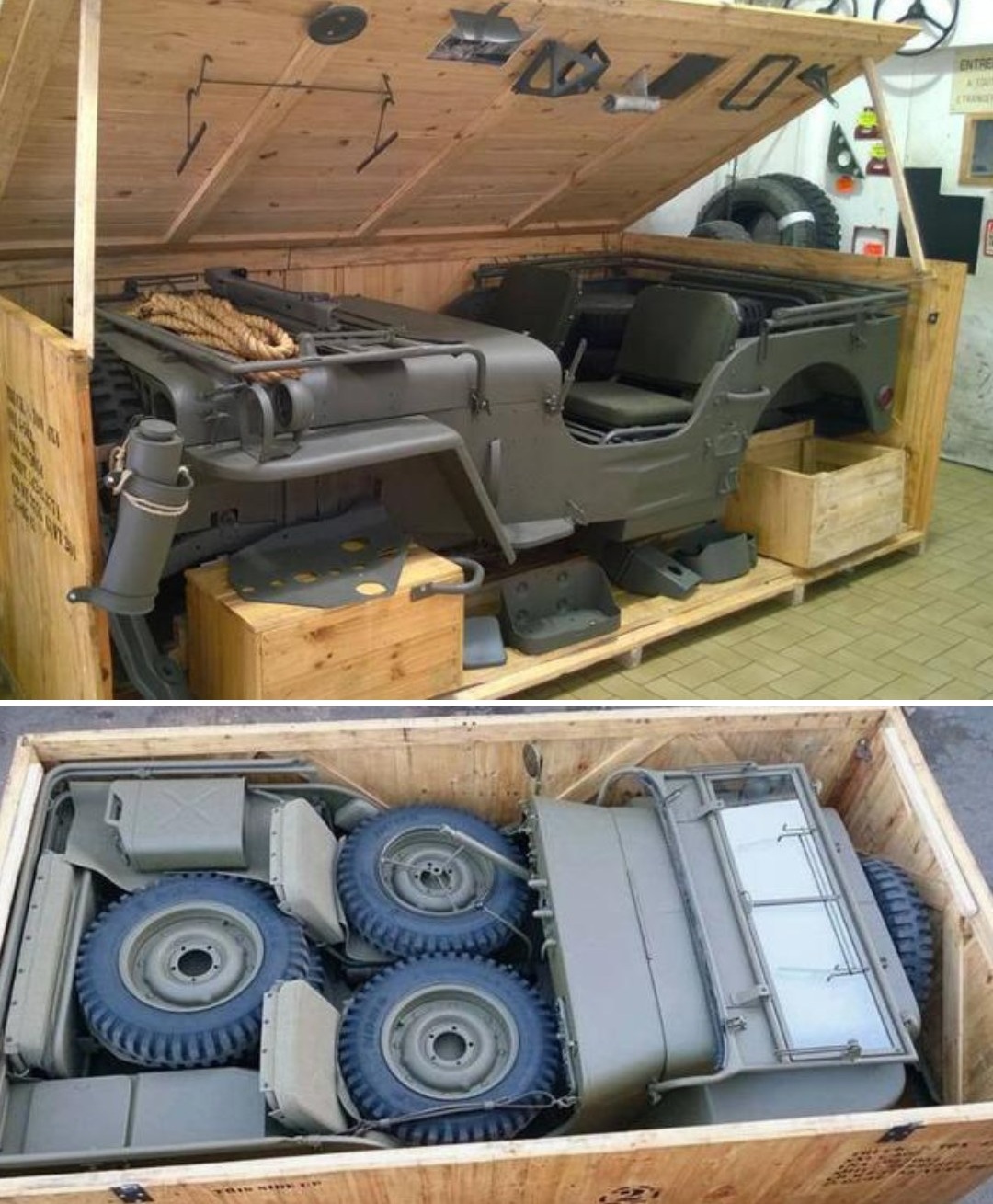When you think of a Jeep, the first image that comes to mind is likely a rugged off-road vehicle tackling difficult terrain. However, during World War II, the legendary Willys MB wasn’t always delivered in one piece. Often, it arrived in wooden crates, shipped in parts, and assembled by soldiers within hours. This ingenious logistical solution helped transform the Willys MB into an iconic symbol of military versatility, playing a pivotal role in the success of Allied forces on every continent.
The Birth of the Military Jeep
In 1940, the U.S. Army issued a call for a lightweight, durable, and all-purpose vehicle that could be used across diverse battlefields. The winning design came from Willys-Overland: the Willys MB, a tough 4×4 vehicle powered by a four-cylinder engine. It was compact, easy to repair, and built to tackle any terrain—from muddy trenches to rocky hills.
Ford soon joined the effort, producing a nearly identical version of the Willys MB called the GPW. Together, these manufacturers produced over 600,000 Jeeps during the war, solidifying the vehicle’s place as one of the most iconic machines in military history.
Why Jeeps Were Shipped in Crates
Shipping fully assembled vehicles during wartime was inefficient. With space on transport ships and aircraft being at a premium, engineers came up with an innovative solution: disassembling the Jeeps into compact crates measuring about 3.5 × 1.4 × 1.2 meters (11.5 × 4.6 × 4 feet). Each crate contained the vehicle’s chassis, body, axles, engine, and smaller parts—all packed with military precision.
Once the crates arrived at their destination, soldiers could assemble the Jeeps in just 4–6 hours using basic tools. This assembly process could even be done on remote battlefields, ensuring that Allied troops always had access to reliable transport. This clever system allowed two to three times more vehicles to be shipped per trip, significantly boosting the Allies’ logistical efficiency.
The Jeep’s Role on the Front Lines
The Willys MB quickly earned the title of “go-anywhere, do-anything” vehicle. Its versatility made it indispensable in a variety of roles on the front lines. Whether transporting soldiers, carrying heavy loads, or pulling artillery, the Jeep was the perfect fit for the dynamic and ever-changing demands of warfare.
The Jeep could navigate nearly any terrain, from deserts to jungles to mountains, and it became the backbone of military mobility. In addition to its ruggedness, the Willys MB’s relatively small size made it highly maneuverable, allowing it to slip through narrow passages and difficult terrain where larger vehicles couldn’t go.
Moreover, the Jeep’s ability to carry equipment, assist in evacuations, and serve as a communications vehicle made it an essential tool for every branch of the military. Its adaptability and reliability earned it the trust of soldiers across the globe, making it one of the most beloved and celebrated vehicles of WWII.
Legacy of the Willys MB
The legacy of the Willys MB goes far beyond its role in WWII. The Jeep’s success paved the way for the development of civilian models that would go on to influence the entire off-roading vehicle industry. Today, the Jeep remains a symbol of durability and adventure, carrying the spirit of the original Willys MB into the modern era.
As we reflect on the impact of the Willys MB, it’s clear that its place in history goes beyond its military contributions. This humble vehicle, shipped in crates and assembled by soldiers, became a global icon of strength, resilience, and innovation. It’s no wonder that the Jeep continues to capture the hearts of adventure enthusiasts and military history buffs alike.



